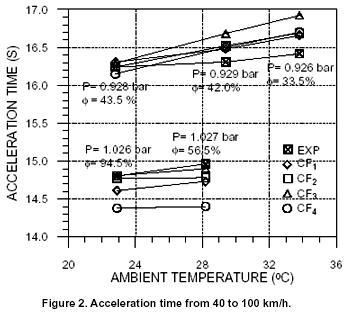A body moving through a fluid experiences a drag force, which is usually divided into two components: frictional drag, and pressure drag.
Frictional drag comes from friction between the fluid and the surfaces over which it is flowing. This friction is associated with the development of boundary layers, and it
scales with Reynolds number as we have seen above. Pressure drag comes from the eddying motions that are set up in the fluid by the passage of the body. This drag is associated with the formation of a wake, which can be readily seen behind a passing boat, and it is usually
less sensitive to Reynolds number than the frictional drag. Formally,
both types of drag are due to viscosity (if the body was moving through an an inviscid fluid there would be no drag at all),





 Total aero drag is proportional to air density and air density decreases with temperature.
Total aero drag is proportional to air density and air density decreases with temperature.

 Reply With Quote
Reply With Quote The air is denser so you get a bigger bang for your money !
The air is denser so you get a bigger bang for your money !

Bookmarks